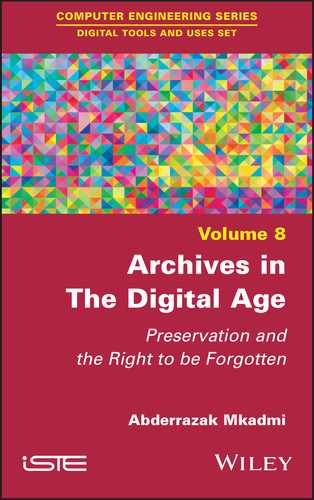Archiving has become an increasingly complex process. The challenge is no longer how to store the data but how to store it intelligently, in order to exploit it over time, while maintaining its integrity and authenticity. Digital technologies bring about major transformations, not only in terms of the types of documents that are transferred to and stored in archives, in the behaviors and practices of the humanities and social sciences (digital humanities), but also in terms of the volume of data and the technological capacity for managing and preserving archives (Big Data). Archives in The Digital Age focuses on the impact of these various digital transformations on archives, and examines how the right to memory and the information of future generations is confronted with the right to be forgotten; a digital prerogative that guarantees individuals their private lives and freedoms.
Table of Contents
- Cover
- Title Page
- Copyright
- Preface
- Introduction
- 1 Digital Archives: Elements of Definition
- 2 Digital Archiving: Methods and Strategies
- 3 Archives in the Age of Digital Humanities
- 4 Digital Archiving and Big Data
- 5 Preservation of Archives versus the Right to be Forgotten
- Conclusion
- List of Acronyms
- References
- Index
- End User License Agreement
